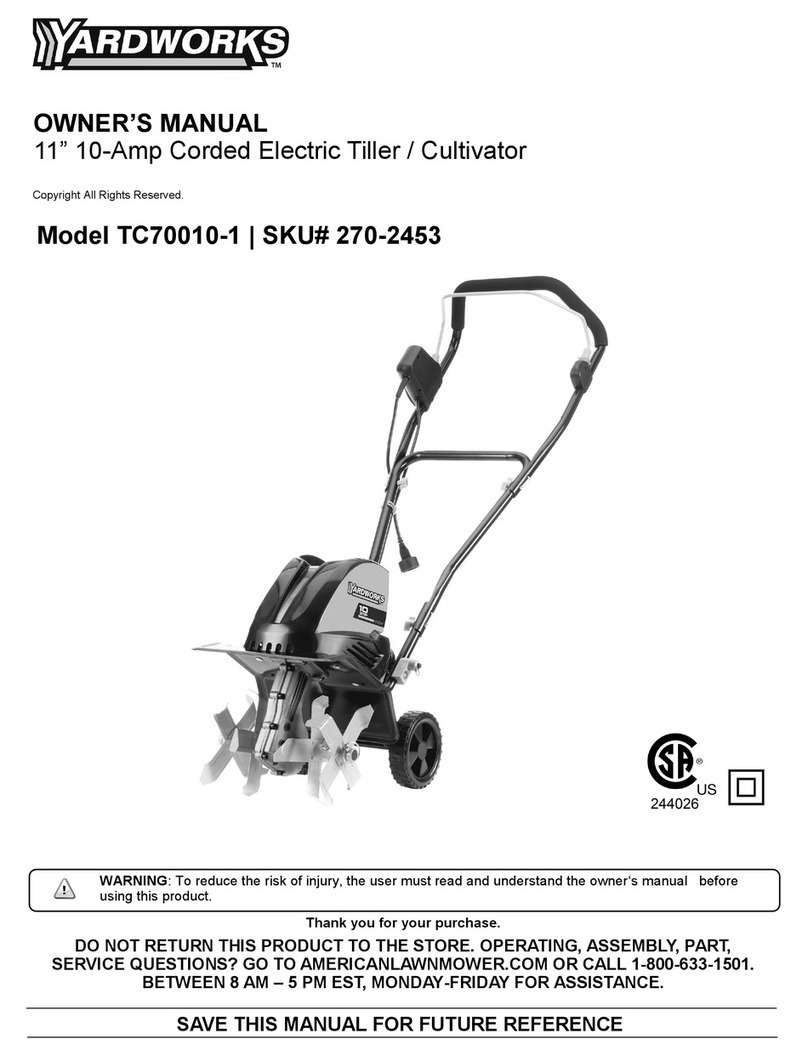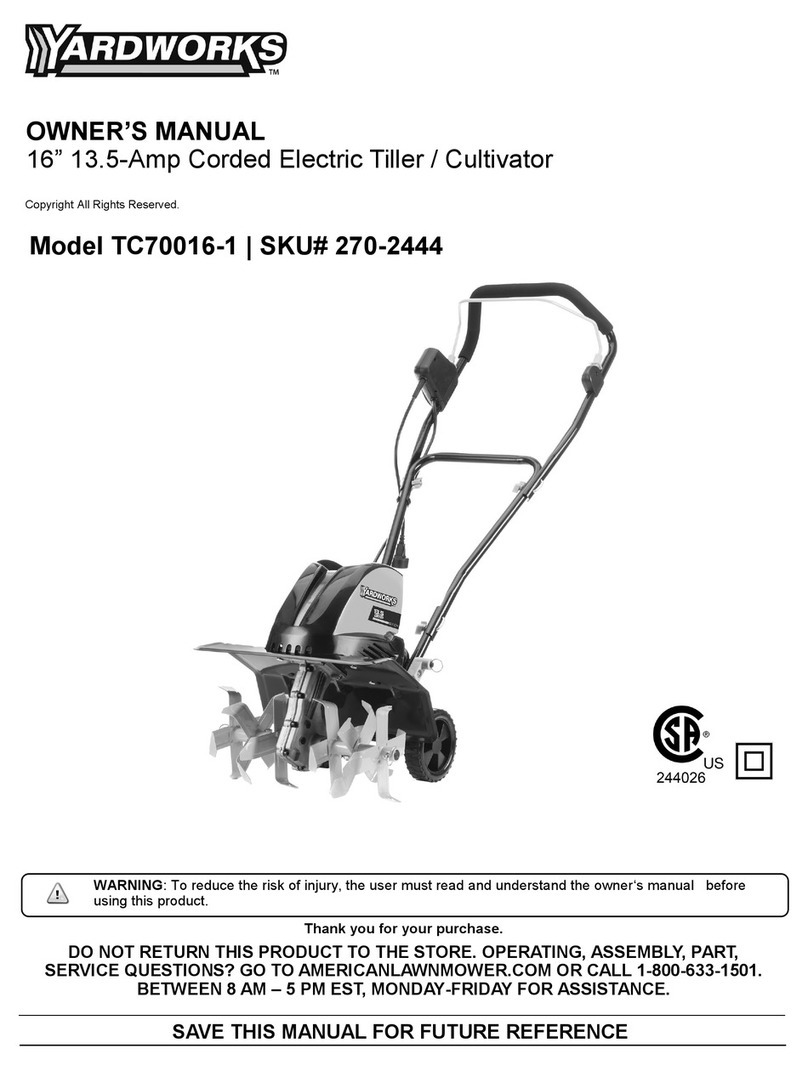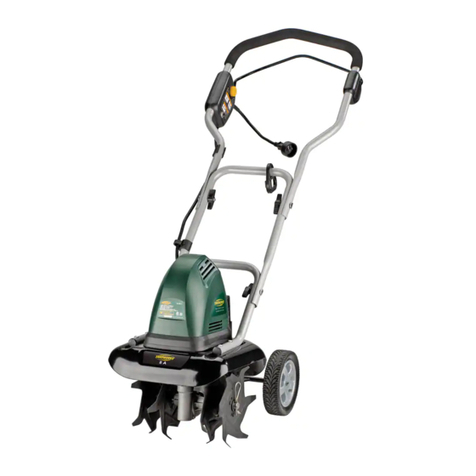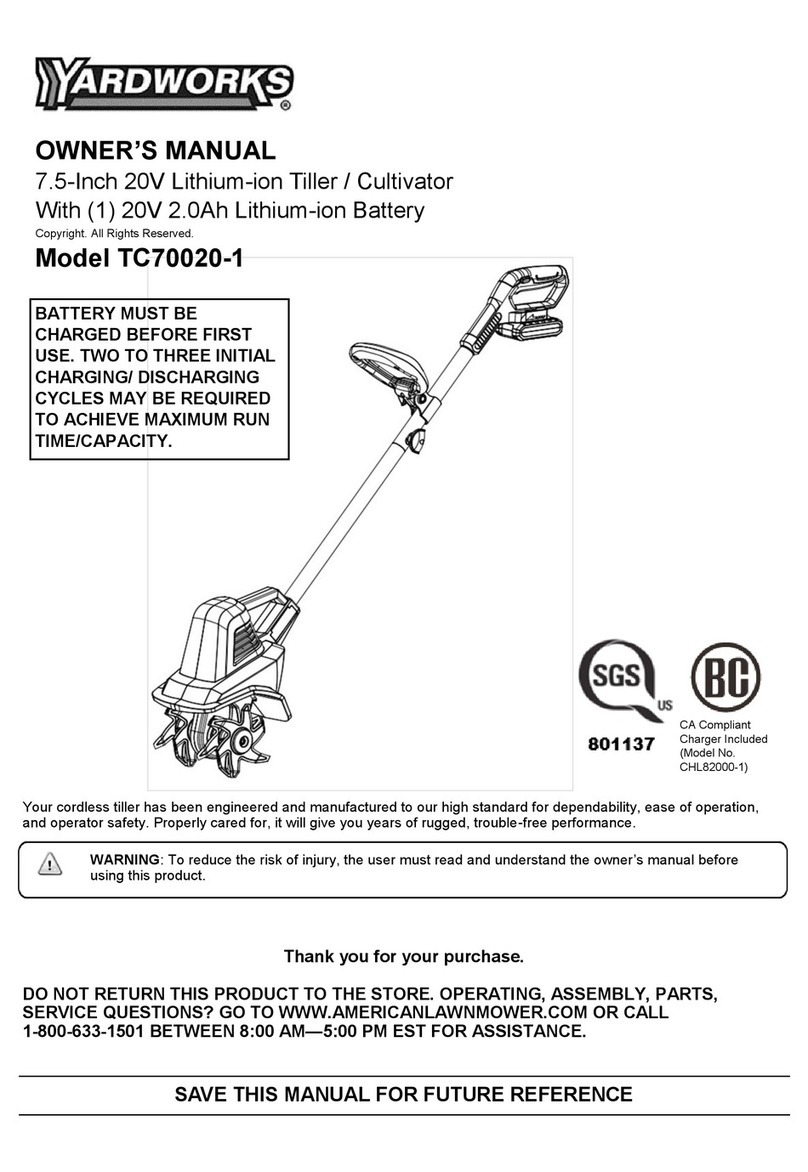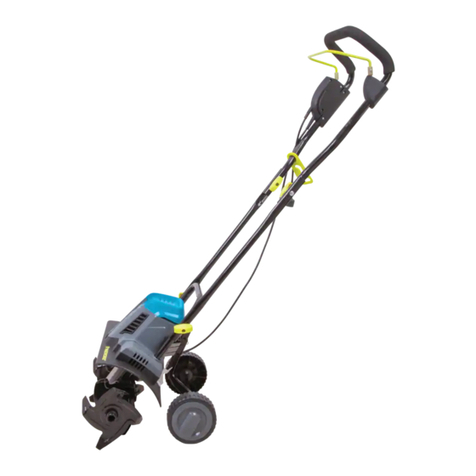
BATTERY & CHARGER
The battery that is supplied with the tiller is a maintenance-
free, sealed, 24 V storage battery. It can be tipped without
danger of acid spillage. The charger will require
approximately 10 hours to recharge a fully discharged
battery.
Allow at least 10 hours of battery charging before using
the tiller for the first time.
For optimal performance, charge the battery every two
weeks, even when it is not in use.
Charge the battery in a cool, dry place.
The battery does not have to be fully discharged before
recharging. This battery will not develop a memory.
2 to 3 initial charging/discharging cycles may be required
in order to reach the maximum run time/capacity.
When it is fully charged, the battery can be stored in
temperatures as low as 23 °F (–5 °C) for a period of up
to two weeks before it requires recharging.
Operate the battery charger in temperatures between 23°
and 104° F (–5° and 40° C).
Use only the charger that is provided by the manufacturer
to charge the battery.
DO NOT ABUSE THE CHARGER CORD. Do not carry
the charger by the cord. Do not disconnect the charger
from the outlet or the tiller by pulling the charger cord.
Do not the service the tiller with the charger connected
or with the safety key installed.
Do not operate a damaged charger. Replace the charger
cord or the charger immediately .
Charge the tiller battery in a dry location Do not expose
the tiller or the charger to rain. Do not charge the battery
in wet locations.
Keep the tiller and the charger away from water, heat
sources (radiators, heaters, stoves, etc), flames, and
chemicals.
Disconnect the battery from the battery clip attachment.
The battery can be charged in or out of the tiller/edger.
Plug the charger connector into the jack on the
tiller/edger battery.
Connect the transformer to the charger.
Plug the transformer into a polarized household outlet.
The charging light and the power light will light up.
When the battery is fully charged, the charging light will
change from red to green.
For optimum performance, it is recommended that the
tiller be charged every two weeks when it is not in use.
Cold weather can shorten the battery life if the battery
is not charged every 2 weeks during the winter season.
It is recommended that the battery be removed from the
tiller and stored in a dry location, at temperatures
between 40° and 75° F (5° and 25° C).
CHARGING PROCEDURE (Fig.1)
Fig. 1
Battery
BCI Switch
Charger connector
LED Charging light
Note: The left side is the Power
indicator. The right side is the
Charging (RED), and Fully
Charged (GREEN) indicator.
LED Power light
Charger
Fig. 2
BATTERY CAPACITY INDICATORS: (Fig. 2)
Push the Battery Capacity Indicator (BCI) switch, which is
located on the top of the battery. The lights will indicate the
battery's capacity, according the following list.
If three GREEN lights are lit, this indicates that the
battery is charged to full capacity.
If two GREEN lights are lit, this indicates that the
battery is charged to 80% of its capacity.
If only one GREEN light is lit, this indicates that the
battery is charged to 60% of its capacity.
If the AMBER light is lit, this indicates that the battery
is charged to 40% of its capacity, and will soon require
charging. It is recommended that the battery be charged
at this point.
If the RED light is lit, this indicates that the battery is
charged to 20% of its capacity, and that it requires
immediate charging before it can be used.
7
Green Green Green Amber Red BCI switch






